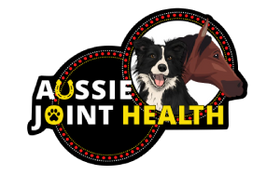Canine Hip Dysplasia
what does it mean?
Hip dysplasia is a skeletal problem of the hips. In terms of how the hip works, it has a ball and socket joint. The ball and socket of a normal hip move smoothly and freely. As a result of hip dysplasia, the socket and ball do not fit correctly, causing the grinding, and rubbing. Consequently, the joint itself deteriorates over time, eventually ceasing to function.
How does hip dysplasia in dogs occur?
Dogs of any breed can suffer from hip dysplasia. The condition is more common in large breeds. Usually, hip dysplasia can be a genetic factor. An unbalanced diet, excessive growth rate, and improper exercise can magnify this genetic predisposition. Additionally, inadequate nutrition and exercise can influence a dog's likelihood of developing hip dysplasia. Obese dogs experience a lot of joint stress, which can exacerbate or cause hip dysplasia.
Dogs with hip dysplasia experience the following:
Dogs can show signs of hip dysplasia as early as four months old. Others develop it during their aging process along with osteoarthritis. As hip dysplasia progresses, the symptoms can vary based on the severity of the disease, the degree of inflammation, and how long the dog has been suffering.
- The activity level has decreased.
- Motion range has been reduced
- Climbing stairs, jumping, running, or climbing a ladder with difficulty or reluctance.
- In the hind end, lameness is present.
- As if bunny-hopping, swaying, and hopping
- During movement, there is grating in the joint.
How to diagnose hip dysplasia in dogs:
You can expect a physical examination from your veterinarian at your dog's regular check-up. Your veterinarian may suspect hip dysplasia simply by performing this exam. If a dog is in discomfort, owners should immediately consult veterinarians. A veterinarian may manipulate your dog's hind legs to check for looseness, pain, or reduced range of motion in the joint. Your veterinarian will also ask about any injuries or incidents that may have contributed to the symptoms. Radiographs of your dog's hips will help your veterinarian determine the degree and severity of hip dysplasia, as well as the most effective treatment plan.
Treatments for canine hip dysplasia that do not involve surgery:
The goal of non-surgical treatment is to manage symptoms and delay the progression of the disease. When a dog has mild to moderate hip dysplasia, non-surgical treatment is effective.
Here is a summary of the non-surgical treatments for hip dysplasia:
- The use of anti-pain medications. In most cases, pain is managed using nonsteroidal anti-inflammatory drugs (NSAIDs) such as Metacam, Carprofen, and Previcox.
- Hip and Joint Supplements. Canine Joint Plus is an excellent choice.
- A physical therapy program. Hydrotherapy (swimming and underwater treadmills) strengthens the muscles without overstraining the joints, while acupuncture relieves pressure points.
- Diet and exercise regimens that are specific to each patient. The importance of diet and exercise cannot be overstated. Hip pain is aggravated by weight gain - it adds pressure.
Canine Joint Plus

Shop Now
Designed to assist your dog with joint stiffness and arthritis. The product is made with the highest quality ingredients, with no fillers or unnecessary binders.
Ingredients: Glucosamine Sulfate, Chondroitin, Vitamin C, MSM, Hyaluronic Acid
For animal consumption only.
If you suspect your dog may have hip dysplasia, please consult your veterinarian as soon as possible to seek the appropriate diagnosis and treatment plan.

